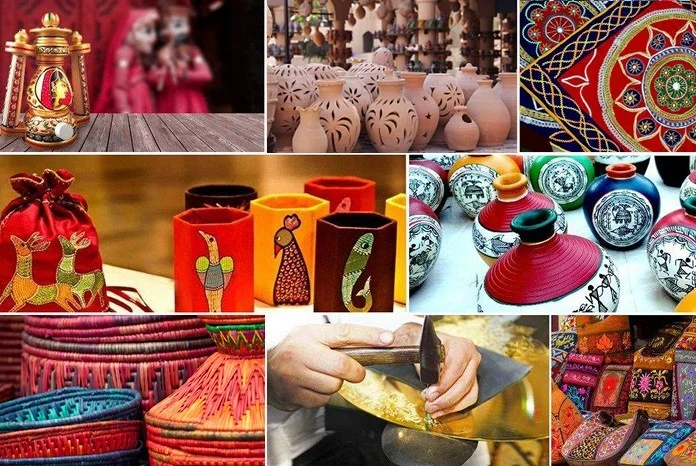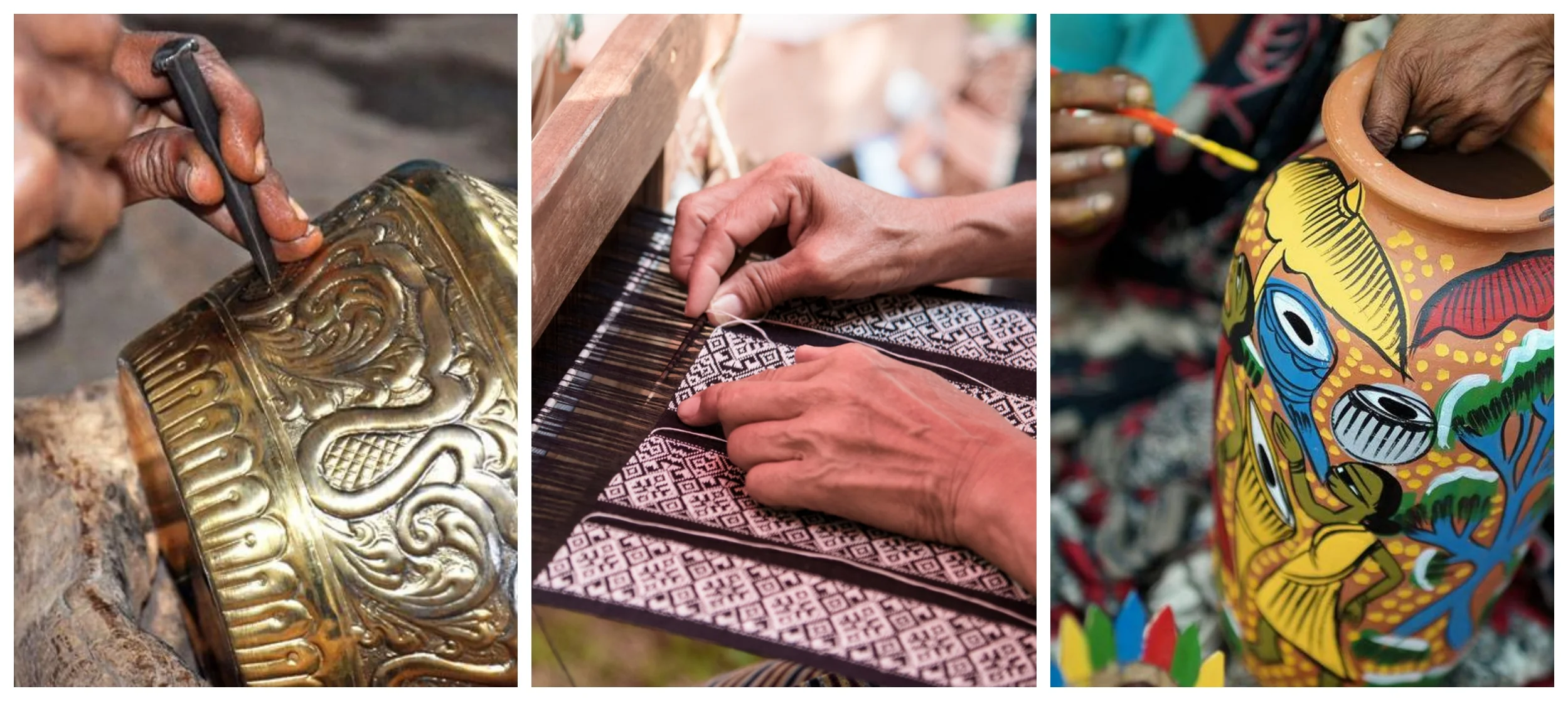Crafting Heritage: The Role of Artisans in Indian Art
Indian art is a vibrant and diverse field shaped by centuries of tradition, skill, and creativity. At the heart of this rich artistic legacy are the artisans—skilled craftsmen and women whose expertise and dedication bring art forms to life. These artisans play a crucial role in preserving and evolving India’s artistic heritage, passing down techniques and traditions through generations.

Traditional Craftsmanship
Traditional Indian craftsmanship encompasses a wide range of techniques and materials, from weaving and embroidery to pottery and metalwork. Artisans are the custodians of these time-honored practices, each specializing in a specific craft. For instance, weavers of Banarasi silk create elaborate patterns with gold and silver threads, while potters in Gujarat produce intricate blue pottery. These traditional crafts are not only artistic expressions but also vital components of India’s cultural identity.
Preservation of Techniques
One of the primary roles of artisans is to preserve traditional techniques and methods that have been passed down through generations. Many Indian art forms are rooted in ancient practices that require meticulous skill and knowledge. Artisans maintain the integrity of these techniques by adhering to traditional methods and using traditional materials. For example, the art of Kalamkari painting involves hand-painting or block-printing on fabric using natural dyes, a practice that has been maintained for centuries by skilled artisans.
Innovation and Evolution
While artisans are dedicated to preserving traditional practices, they also play a crucial role in innovating and evolving these art forms. Contemporary artisans often blend traditional techniques with modern aesthetics, creating new interpretations and applications of their crafts. For example, textile artisans may experiment with contemporary design elements while preserving traditional weaving techniques. This fusion of old and new helps to keep Indian art relevant and dynamic, appealing to both traditional and modern audiences.
Economic and Social Impact
Artisans contribute significantly to the local and national economy, particularly in rural areas where traditional crafts are a primary source of livelihood. Craftsmanship supports a wide range of industries, including fashion, home decor, and cultural tourism. Additionally, the work of artisans often supports local communities by creating jobs, preserving cultural heritage, and fostering social cohesion. By participating in craft fairs, exhibitions, and collaborations, artisans also help to promote and sustain the value of their work in the global market.
Training and Apprenticeship
The transmission of artisanal skills typically occurs through informal channels, such as family traditions and apprenticeships. Young artisans often learn their craft from experienced masters, absorbing techniques and knowledge over many years. This system of mentorship and hands-on training ensures the continuity of traditional arts and crafts. However, in recent times, formal institutions and organizations have begun to offer structured training programs to support and enhance artisanal skills.
Challenges and Opportunities
Despite their vital role, artisans face various challenges, including the threat of modernization, competition from mass-produced goods, and the loss of traditional markets. However, there are growing efforts to address these issues through government initiatives, non-profit organizations, and community-based projects. These efforts include promoting fair trade practices, providing marketing support, and creating platforms for artisans to showcase their work. Such initiatives help to ensure that traditional crafts continue to thrive in the face of changing economic and social landscapes.
Conclusion
Artisans are the custodians of India’s artistic heritage, playing a crucial role in both preserving and evolving traditional crafts. Their skill, dedication, and innovation contribute to the rich tapestry of Indian art, linking past and present in a continuous cycle of creativity. By supporting and celebrating the work of artisans, we honor their contributions and ensure the ongoing vitality of India’s diverse artistic traditions.



